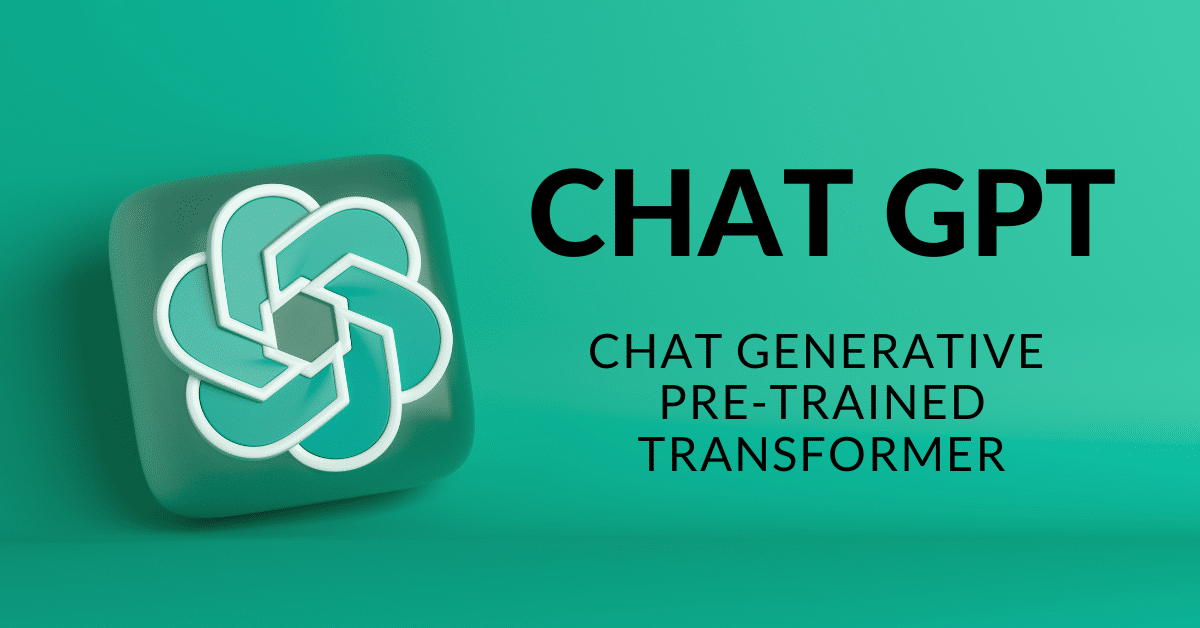ChatGPT is a chat AI model developed by OpenAI. It is a pre-trained language model that uses various learning techniques to generate human-like responses to text-based prompts. It can answer questions, provide information, and engage in conversations on multiple topics.
It is an alternative to the GPT (Generative Pretrained Transformer) architecture, a transformer-based deep learning model. It was trained on a mass of text data from the internet and can generate coherent and informative responses to a wide range of natural language inputs.

What is ChatGPT?
It has a state-of-the-art performance on various language tasks, such as question answering, text generation, and language translation, and can be fine-tuned for specific use cases, such as customer service, content creation, and more. The model’s ability to generate human-like responses makes it a convenient choice for building conversational AI applications, such as chatbots, voice assistants, and more.
Who Built ChatGPT?
It was built by OpenAI. They are a research organization devoted to creating and promoting friendly AI that benefits humanity. The organization was founded by Elon Musk, Sam Altman, Greg Brockman, Ilya Sutskever, Wojciech Zaremba, and John Schulman in 2015. Their goal consisted of promoting and developing friendly AI to benefit all groups of people.
Since its inception, OpenAI has been at the forefront of AI research and development and has produced several cutting-edge AI models, including the GPT series of models, which includes ChatGPT. OpenAI’s work has had a major impact on AI and paved the way for many exciting new applications and innovations.
Is ChatGPT free?
OpenAI provides access to ChatGPT through its API service, which is not free. The API service allows developers to integrate ChatGPT into their applications and provides access to the model’s capabilities through a simple REST interface. Pricing for the API service is based on the amount of usage and is available on a subscription basis.
OpenAI also provides access to pre-trained models for research and educational purposes, but these models are typically more limited in scope and may not have the same capabilities as the full API service.
It is important to note that OpenAI’s mission is to ensure that AI technologies are developed and used in a way that is safe and beneficial for all, and the API service and pre-trained models are provided with this goal in mind.
What Algorithm does ChatGPT use?
It is based on the Transformer architecture. This is a type of deep neural network designed for processing sequential data, such as natural language text. The Transformer architecture was introduced in 2017 in a seminal paper by Vaswani et al. and has since become the dominant architecture for many NLP tasks, including machine translation, question answering, and text generation.

At its core, Chat GPT uses a sequence-to-sequence (Seq2Seq) architecture, which generates a response given an input sequence (such as a question or prompt). The Seq2Seq architecture is implemented using the Transformer architecture, which includes multi-head self-attention mechanisms and feed-forward layers.
In addition to the Transformer architecture, this chat also uses other techniques to improve its performance, such as pre-training on large corpus of text data, fine-tuning on smaller task-specific datasets, and using techniques such as byte-pair encoding to handle out-of-vocabulary (OOV) tokens.
Overall, the combination of the Transformer architecture and these other techniques make ChatGPT a powerful and versatile NLP model, capable of performing a wide range of NLP tasks.
What is ChatGPT used for?
- Question answering: It can answer factual and opinion-based questions, such as “What is the capital of France?” or “Who is the best football player of all time?”
- Text generation: ChatGPT can generate coherent and informative text on a given topic, such as writing a news article, composing a poem, or summarizing a long text.
- Conversation simulation: ChatGPT can engage in conversation and respond to users’ messages in a natural and human-like manner.
- Language translation: ChatGPT has the skill to translate text from one language to another, providing high-quality, context-aware translations.
- Sentiment analysis: ChatGPT can classify the sentiment of a given text as positive, negative, or neutral.
- Summarization: ChatGPT can summarize long documents or articles into shorter, more concise versions.
- Named entity recognition: ChatGPT can classify and extract named entities from a text.
- Text classification: ChatGPT can classify text into different categories, such as spam vs. not spam, positive vs. negative sentiment, and more.
- The versatility of this model makes it a powerful tool for building a wide range of NLP applications.

Who can benefit from ChatGPT?
Many groups can benefit from using this chat or similar conversational AI models:
- Businesses: ChatGPT can automate customer service, support, and sales processes, freeing employees’ time for more complex tasks.
- Developers: ChatGPT can be fine-tuned and integrated into a wide range of applications, like chatbots, voice assistants, and more, making it a valuable tool for developers working on conversational AI projects.
- Researchers: ChatGPT provides a state-of-the-art model for NLP research, allowing researchers to explore new and innovative techniques in the field.
- Content creators: ChatGPT can generate text, summarize articles, and perform other text-related tasks, making it a valuable tool for writers, journalists, and others in the content creation industry.
- Educators: this chat can provide students with instant feedback and answers to their questions, making it a valuable tool for online education and e-learning platforms.
These are just some examples of groups that can benefit from using ChatGPT. The model’s versatility and ability to generate human-like responses make it a valuable tool for a wide range of industries and applications.




